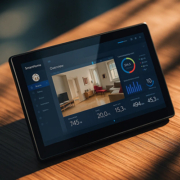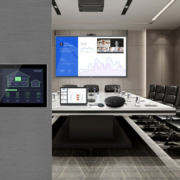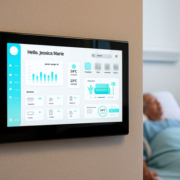Integrated Smart Home Control Systems
As technology continues to evolve, the concept of a connected home is transforming from a luxury into a lifestyle necessity. Integrated Smart Home Control Systems are at the core of this evolution—providing centralized, intelligent management of lighting, climate, security, entertainment, and more through a unified platform.
What Are Integrated Smart Home Control Systems?
An Integrated Smart Home Control System refers to a centralized solution that connects and manages multiple smart devices and subsystems within a home or building. Instead of operating each device independently through different apps or remotes, these systems offer a single interface—often through a touchscreen control panel, smartphone app, or voice assistant.
This integration enhances the user experience, simplifies daily routines, improves energy efficiency, and increases property value.
Key Components of an Integrated System
1. Central Control Panel or Hub
The control panel serves as the “brain” of your smart home. It connects all compatible devices and systems, enabling communication and control from a single point—whether wall-mounted or app-based.
2. Smart Devices and Subsystems
Integrated systems connect a wide range of devices, including:
- Lighting and Dimming Systems
- Thermostats and HVAC Controls
- Motorized Curtains and Blinds
- Security Systems and Cameras
- Smart Locks and Access Control
- Multimedia and Entertainment Systems
3. Communication Protocols
To function seamlessly, integrated systems rely on protocols such as:
-
Zigbee, Z-Wave, KNX, Modbus, MQTT
-
Wi-Fi, Bluetooth, and Ethernet
-
Matter, the new universal protocol for cross-brand compatibility
These protocols ensure reliable communication between devices, regardless of brand or manufacturer.
4. Automation and Scene Control
One of the main advantages of integration is automation. Users can set up customized scenes or routines:
-
“Away Mode”: Turns off lights, locks doors, sets alarms, adjusts temperature.
-
“Good Morning”: Opens curtains, turns on lights, plays morning news.
-
“Movie Time”: Dims lights, closes blinds, turns on home theater.
Benefits of Integrated Smart Home Systems
Simplicity
Control everything from one place—no more app-switching or confusion over remotes.
Efficiency
Smart automation helps reduce energy consumption by turning off unused devices or optimizing HVAC operation.
Security
Integrated access control and surveillance systems enhance safety and provide real-time monitoring through a single dashboard.
Scalability
Start small and expand easily. Add new rooms, devices, or automation scenes as your needs grow.
Remote Control
Access your home system from anywhere via mobile apps or cloud-connected platforms.
Portworld’s Integrated Smart Home Control Solutions
At Portworld, we specialize in designing and manufacturing Android-based smart home control panels and integrated system solutions tailored to residential and commercial applications.
Our offerings include:
- 5.5”, 8”, and 10” Smart Touch Panels (powered by Rockchip RK3566/RK3568)
- Support for Android/Linux OS and open SDK/BSP development
- Multi-protocol compatibility: Zigbee, KNX, Modbus, MQTT, Wi-Fi, PoE, RS485
- OEM/ODM customization for interface design, hardware layout, and system integration
- Centralized software solutions for multi-room or multi-zone management
Our panels are widely used in smart homes, hotels, office buildings, and luxury apartments—enabling integrated automation that improves comfort, efficiency, and control.
Real-World Application Examples
- Smart Villas: Central control of lighting, curtains, door access, and irrigation systems.
- Hotels: In-room automation and guest services through a single touch panel.
- Offices: Meeting room scheduling, AV equipment, lighting, and climate control via an integrated system.
- Residential Complexes: Unified security and facility management across units.





